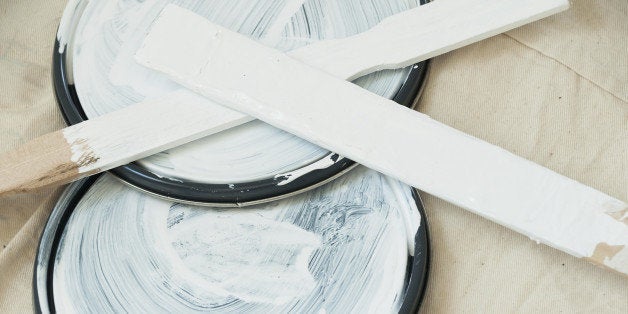
Some home chores become second nature. Take painting, for example: You throw down a drop cloth, grab a brush and get to it, right? You might even be able to quickly tally up how many gallons of paint and primer you'll need to cover your in-need-of-a-refresh living room. But let's turn off autopilot for a second and step back: What exactly is paint primer, anyway?
We turned to a pro -- Deborah Zimmer, a paint and color expert for the Paint Quality Institute and Director of Communications at Dow Coating Materials -- for the answer. She's spoken about the benefits of using primer before, but we had some more questions for her.
What exactly is paint primer?
"In general, a primer sets the stage for an even, smooth topcoat (paint) application. A primer seals the surface and helps to prevent moisture from absorbing into the surface, especially on a new substrate. A primer also may be a 'blocker' of various stains, such as tannin stains."
How is it different from, say, white paint?
"Paint and primers are formulated differently. While they often contain similar raw materials as paint (i.e., binder, pigments and additives), the proportion and types of these materials are different."
Are there different types of primers for different surfaces?
"Yes, but which one you use depends upon the surface you’re painting, where it is located and the condition of your home.
Stain-blocking primers prevent grease, rust, smoke residue, and other stains from seeping through the finished paint job and ruining its appearance. If your walls or woodwork show signs of these contaminants, you’ll want to be sure to apply a stain-blocker before starting to paint.
Vapor barrier primers, which are typically used in bathrooms, kitchens, and laundry rooms, do something entirely different. They help keep moisture from passing through the walls to the exterior, where it could damage both the wall insulation and the house paint outside. The moisture barrier they form also helps maintain a comfortable level of humidity inside the home during the colder months.
Bonding primers are designed for use on very slick or glossy materials such as glass, tile, laminates, or vinyl-coating paneling. When painting these surfaces, a bonding primer is essential to help the paint adhere well.
Aptly named kitchen and bath primers are made specifically for use in those rooms. They contain both biocides and stain-blockers to help control mildew and mold growth in damp areas.
There are also primers that give paint a uniform appearance when applied over drywall and joint compound, and latex enamel under-coaters, which give glossier paints more uniform sheen. The list goes on and on."
In other words...
Paint primer is necessary if you want to avoid seeing your hard work blister and peel. "And, it can make the painted surface look much more attractive by imparting more uniform color and sheen,” Zimmer says.
Now that you've got that covered, make sure you aren't making any of these other painting mistakes:
